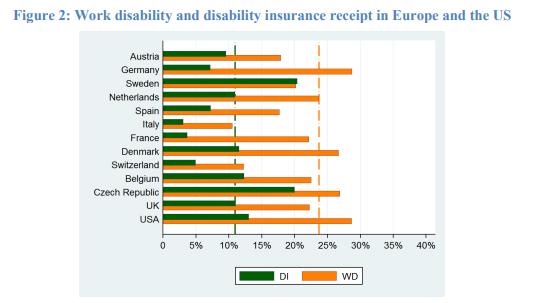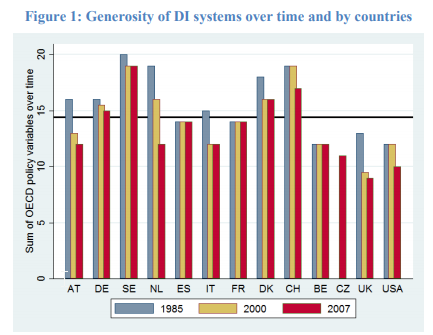If you are hurt and can’t work to make money, what do you do? In most countries, disabled individuals are eligible for disability insurance. However, the rate of individuals who claim disability insurance varies greatly across countries. Is this largely due to differences in country population characteristics or disability policy generosity?
This is the question that an NBER working paper by Börsch-Supan et al. (2018) aims to answer. The figure below shows the the number of people who self report as being work disabled (WD) and the share of people who claim disability insurance (DI).

At the same time, policies surrounding disability insurance vary across country. The figure below plots OECD policy indicators as a proxy for disability insurance generosity. One can see that over time, disability insurance has become less generous. The most generous countries are Scandinavian countries (, Denmark, Sweden) and Switzerland while Belgium, the UK, the US and the Czech Republic are the least generous.

Now to the question at hand, are differences in disability insurance due to population characteristics or disability policies? The authors use data from Survey of Health Ageing and Retirement in Europe (SHARE), the English Longitudinal Study on Ageing (ELSA) and the Health and Retirement Study (HRS) to answer the question. They find that current health status, but also health experienced early in life are good predictors of disability status. They find that drivers of variation of disability insurance claiming within country differ than across country.
Want to publish your own articles on DistilINFO Publications?
Send us an email, we will get in touch with you.
Date: October 16, 2019
Source: Healthcare Economist







